1.3 - A practice of analysis in the tonal harmonic discourse from Bach to Wagner ||
A) FORMULAS - 1. Definition of
a formula ::
2. Presentation of
the little catalogue of harmonic vocabulary ::
3. User's guide to
the little catalogue and various instructions ::
4. Examples
illustrating the little catalogue (motifs: 1, 2, 3, 4, 5, 6a, 6b, 7, 8, 9, 10, 11, 12, 13, 14, 15, 16, 17, 18, 19, 20, motifs in combination)
B) SEQUENCES - 1. Definition of a
harmonic sequence :: 2. Classifying
sequences :: 3. Melodic
formulations: characteristic motifs :: 4. The tonal
nature of the harmonic sequence :: 5.The tripartite
structure of the harmonic sequence :: 6. A
modulating sequence or not? :: 7. Diversification
of harmonic content :: 8. The harmonic
sequence as a place of subversion :: 9. Conclusion
4. EXAMPLES ILLUSTRATING THE LITTLE CATALOGUE
Motif no 9
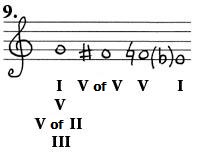
|
Example 205 : F. Chopin : Waltz, op. 64, no 2 (mm 1-4)

Example 206 : F. Mendelssohn : 4 pieces for String quartet, op. 81, no 3, Capriccio, Andante con moto (mm 15-18)
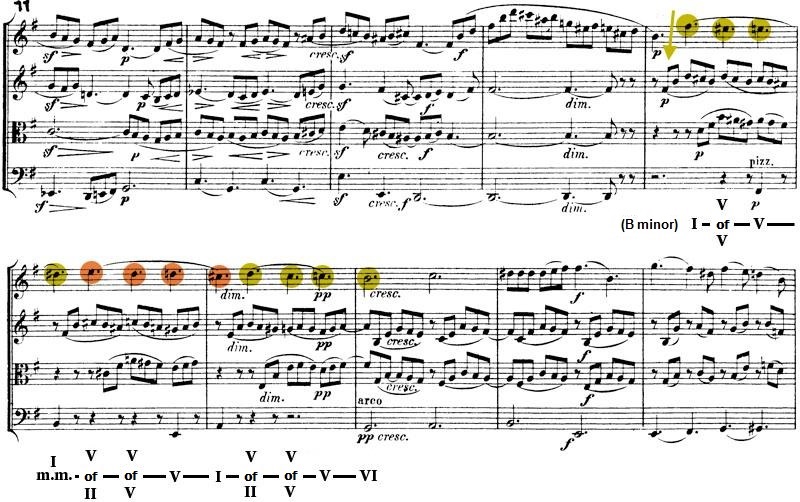
Example 207 : J. Brahms : Sonata for cello and piano, op. 99, I, Allegro (mm 5-8)

Motifs nos 8 and 9 combined

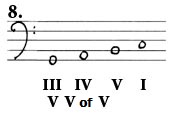
|
Motifs nos 8 and 9, in combination or not, very often serve as a transition between two events.
Example 208 : L.V. Beethoven : Symphony no 7, op. 92, I, Vivace (mm 181-201)
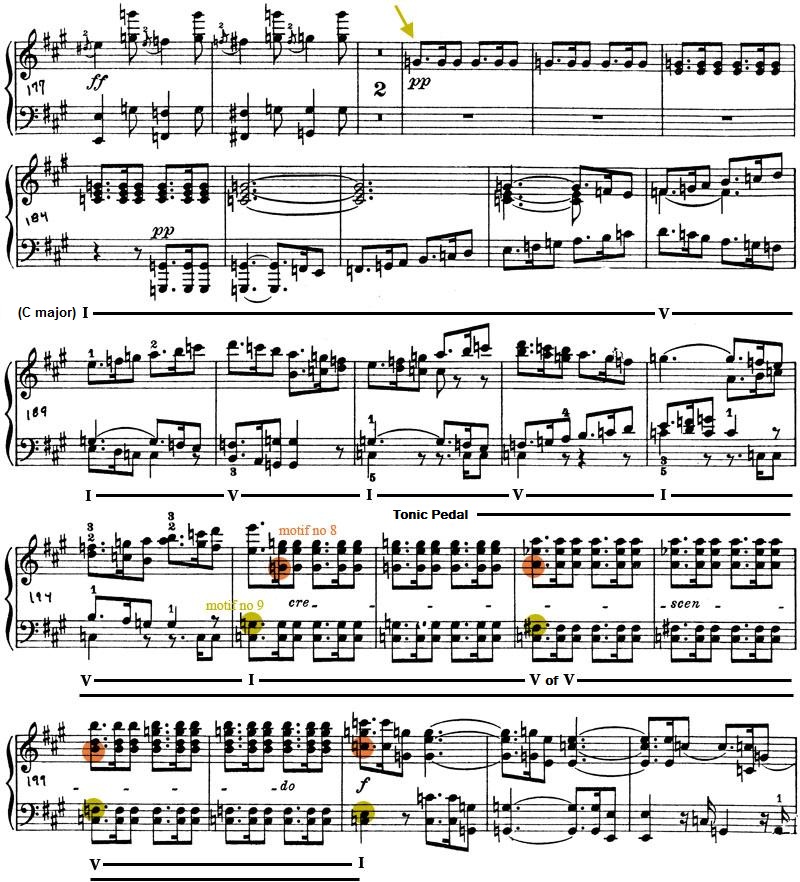
Example 209 : F. Mendelssohn : Hymn of praise, no 2 (mm 7-11)
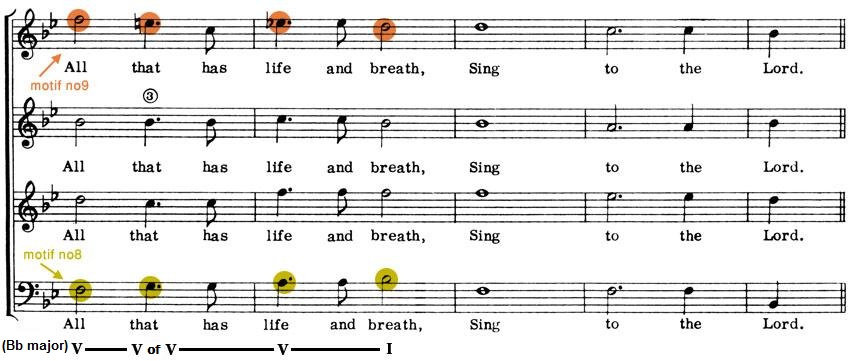
Let us recall that motifs nos 8 and 9 (in combination or not) may simply be harmonized with V - I.
Example 210 : F. Schubert : An die Musik, op. 88, no 4 (mm 10-11)

motif no 10 
|
